The Hollywood Revue of 1929
5.8 /10 1 Votes
40% Rotten Tomatoes Genre Musical Language English | 7.7/10 IMDb Duration Country United States | |||||||||||||||||||||||||||||||||
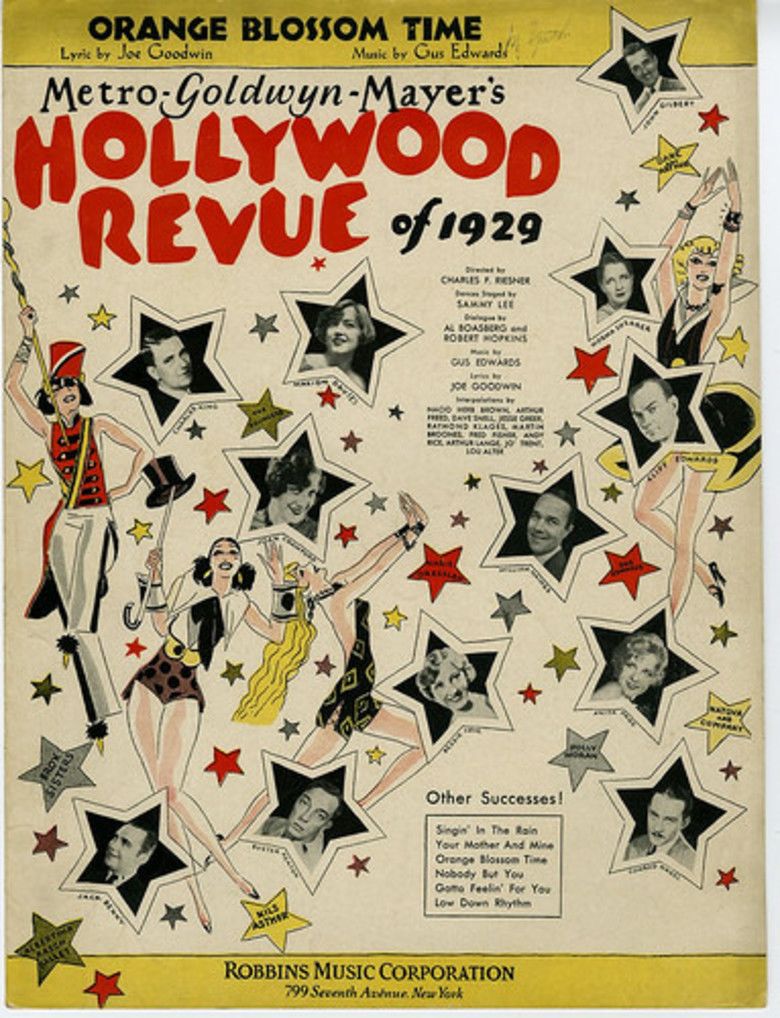 | ||||||||||||||||||||||||||||||||||
Release date June 20, 1929(Los Angeles) Music director Arthur Freed, Nacio Herb Brown, David Snell, Martin Broones, Raymond Klages, Jesse Greer Cast (Himself - Master of Ceremonies), (Himself - Master of Ceremonies), (Himself / Romeo), (Herself / Juliet), (Herself), (Herself) Similar movies Birdman , Pitch Perfect 2 , Entourage , Frozen , Aladdin , Cinderella Tagline 25 of the screen's greatest stars - chorus of 200 - amazingly revolutionary motion picture! | ||||||||||||||||||||||||||||||||||
singin in the rain from mgm s the hollywood revue of 1929
The Hollywood Revue of 1929 is an American Pre-Code musical comedy film released by Metro-Goldwyn-Mayer. It was the studio's second feature-length musical, and one of their earliest sound films. Produced by Harry Rapf and Irving Thalberg and directed by Charles Reisner, it features nearly all of MGM's stars in a two-hour revue that includes three segments in Technicolor. The masters of ceremonies are Conrad Nagel and Jack Benny.
Contents
- singin in the rain from mgm s the hollywood revue of 1929
- Buster keaton princess rajah the hollywood revue of 1929
- Production
- Musical numbers
- Act I
- Intermission
- Act II
- Reception
- Preservation
- References
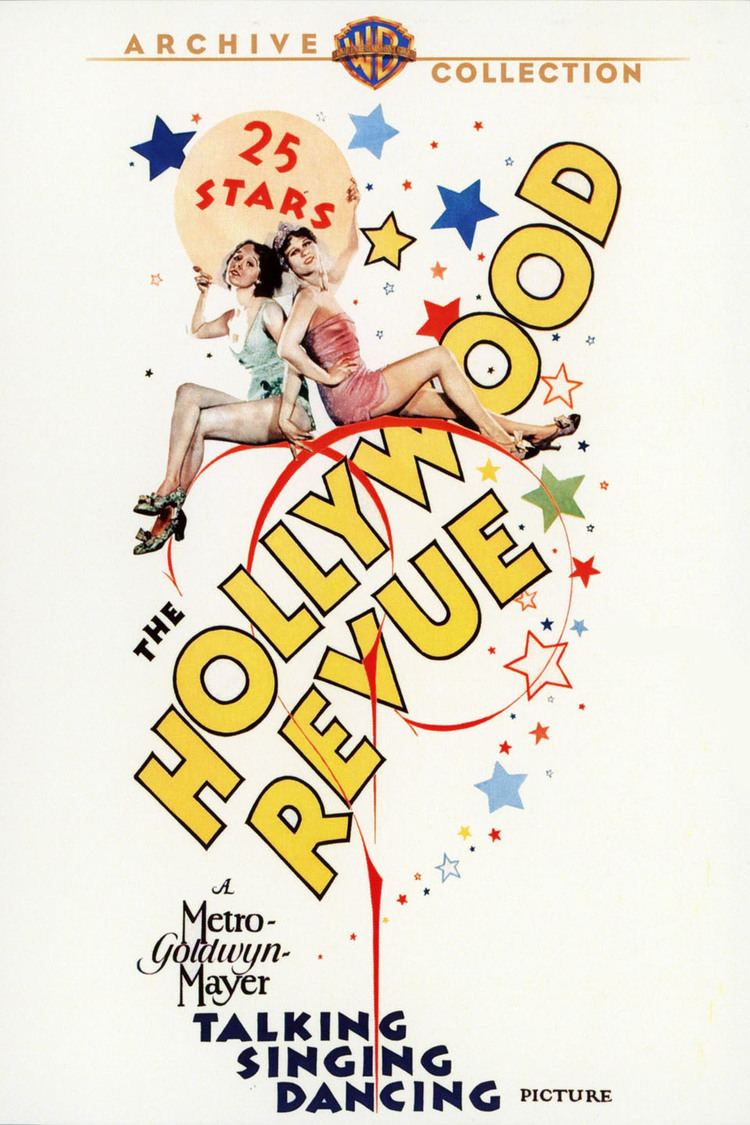
Buster keaton princess rajah the hollywood revue of 1929
Production
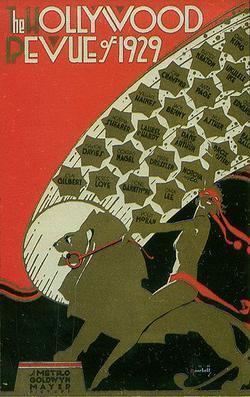
Unlike M-G-M's imposing feature films, which always boasted strong story values, The Hollywood Revue of 1929 was a plotless parade of variety acts. Conrad Nagel, interviewed for the book The Real Tinsel, recalled, "Everybody thought Harry Rapf was crazy for making it." Billed as an "All-Star Musical Extravaganza", the film includes performances by once and future stars, including Joan Crawford singing and dancing on stage. (She later remarked, "Revue was one of those let's-throw-everyone-on-the-lot-into-a musical things, but I did a good song-and-dance number."). Other segments feature Lionel Barrymore, Marion Davies, Gus Edwards, John Gilbert, Buster Keaton, Marie Dressler, Anita Page, Norma Shearer, and the comedy team of Karl Dane and George K. Arthur.

Highlights of the film are a comedy routine starring Stan Laurel and Oliver Hardy as inept magicians, and a variety of musical performances. One of these is the debut of "Singin' in the Rain", performed initially by Cliff Edwards as "Ukulele Ike,'" and later performed at the end of the film by the entire cast. This latter all-star color sequence was a last-minute addition to the film, shot late at night on June 10, 1929, just ten days before the premiere at Grauman's Chinese Theatre. The only major M-G-M stars missing from the revue are Greta Garbo, Ramón Novarro, and Lon Chaney, Sr., although Chaney is referred to by name in one of the songs performed and Garbo is spoken of during one of the introductory dialogues. Only one sequence was cut from the film: three songs by The Brox Sisters, which was recycled into a short subject, Gems of MGM. Another sequence, a parody of the Albertina Rasch ballet's "pearl dance" by Marie Dressler, was planned but not shot (as the film's production records reveal). Instead, the number was replaced by one featuring Buster Keaton, though Dressler did pose for stills wearing a Lady Godiva wig.
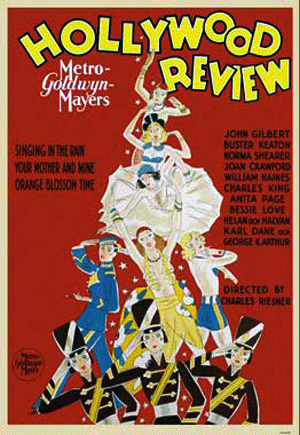
The film is sometimes cited, as on the DVD release of the 1952 Singin' in the Rain, as the movie that led to the downfall of Gilbert's career. Gilbert, a popular silent film actor best known for his work opposite Garbo, possessed a pleasant tenor speaking voice which didn't always match his heroic, dashing screen image. In Hollywood Revue he plays the balcony scene from Romeo and Juliet with Norma Shearer, first straight, then for laughs with contemporary slang. It is possible, though, that the negative effect of the film on Gilbert's career has been overstated, since many contemporary reviews made no criticism of his performance. His problems really began with the next two films he made, His Glorious Night (1929) and Redemption (1930).
Musical numbers

The circulating print of The Hollywood Revue of 1929 runs as follows:
Act I

Intermission
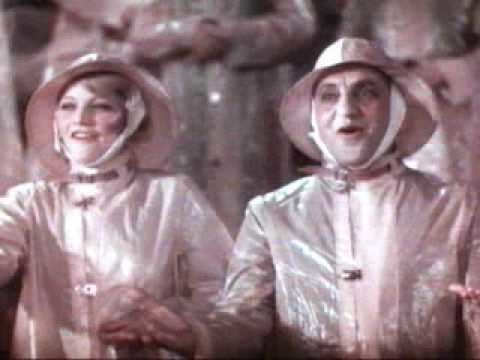
Act II

Reception
The film, which was shot in 25 days with a budget of US$426,000, was popular with audiences and critics alike, especially in its initial big-city engagements. "Brimming over with good fun and catchy music", Mordaunt Hall of The New York Times wrote. Variety called it "the top novelty film to be turned out to date....If the theater booths give it an even break, nothing can stop it." Film Daily reported, "A smash and a wow. Smart revue with plenty of comedy beautifully dressed and a cast that is gilt-edged." John Mosher of The New Yorker called it "the most extravagant and extensive musical comedy so far presented by the talking pictures, and is in itself a complete evening's entertainment."
The film went on to make a profit of $1.1 million and was considered for the Academy Award for Best Picture (there were no official nominations at that point in Motion Picture Association of America history). Producer Rapf tried to follow it up with another revue, The Hollywood Revue of 1930, which was changed during production to The March of Time, and finally abandoned. Musical numbers already shot for the film were edited into M-G-M short subjects of the early 1930s.
Preservation
The film survives intact with its original Technicolor sequences. It was released on laserdisc in the 1990s from MGM/UA Home Video, and on DVD in 2009 through the Warner Archive Collection.
References
The Hollywood Revue of 1929 WikipediaThe Hollywood Revue of 1929 IMDbThe Hollywood Revue of 1929 Rotten TomatoesThe Hollywood Revue of 1929 themoviedb.org
